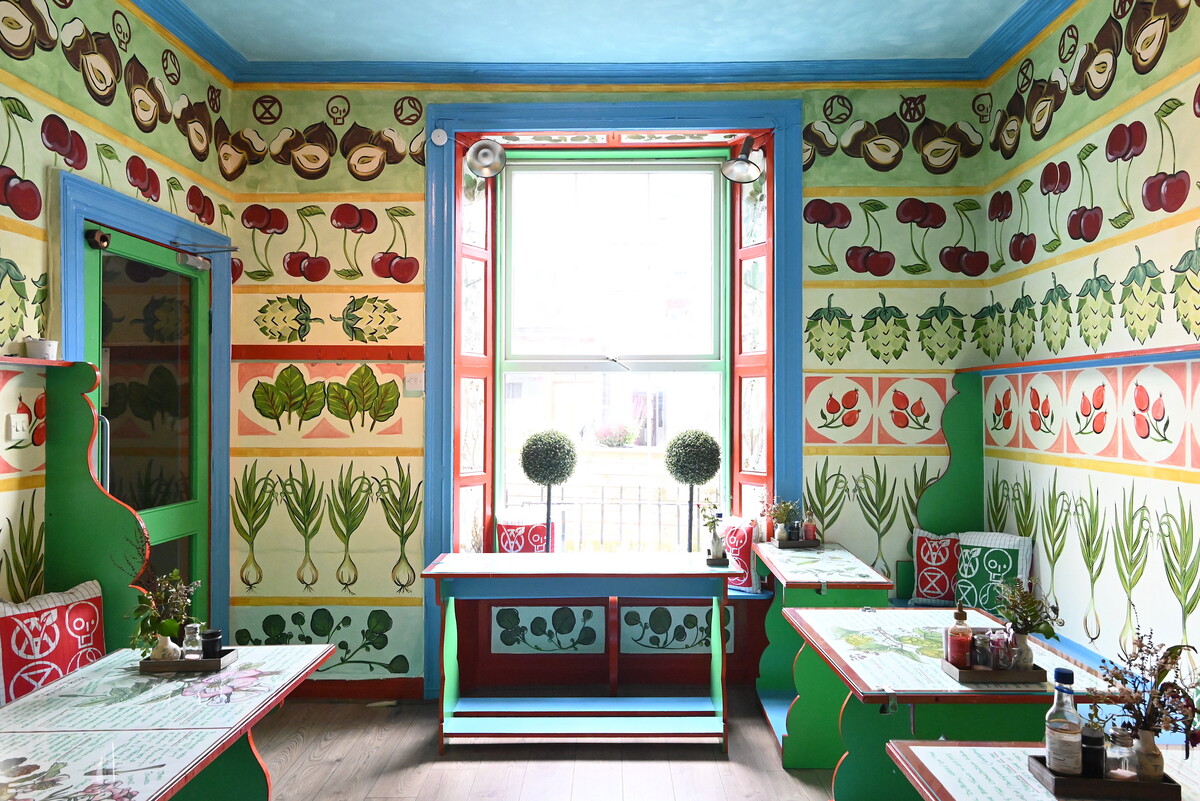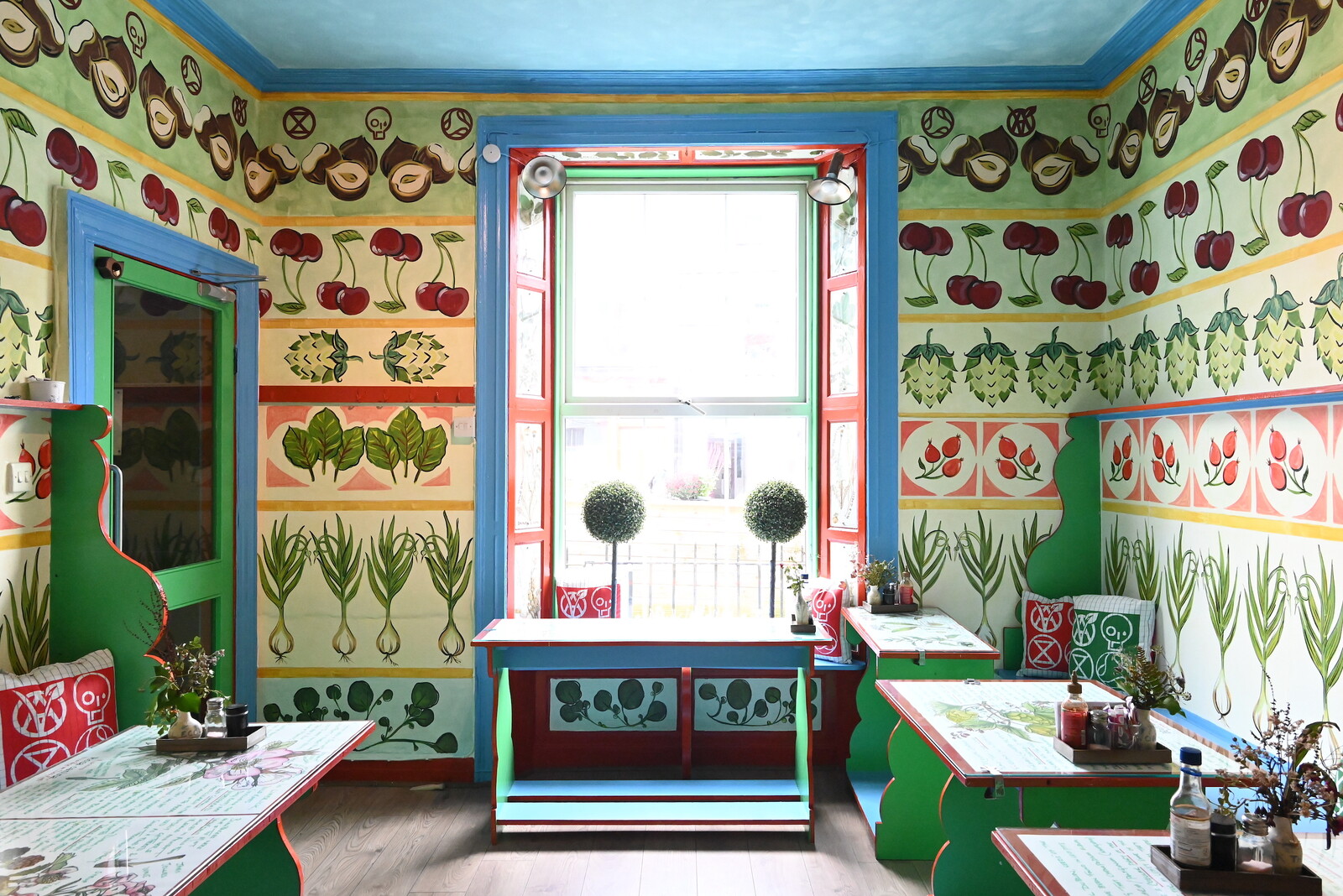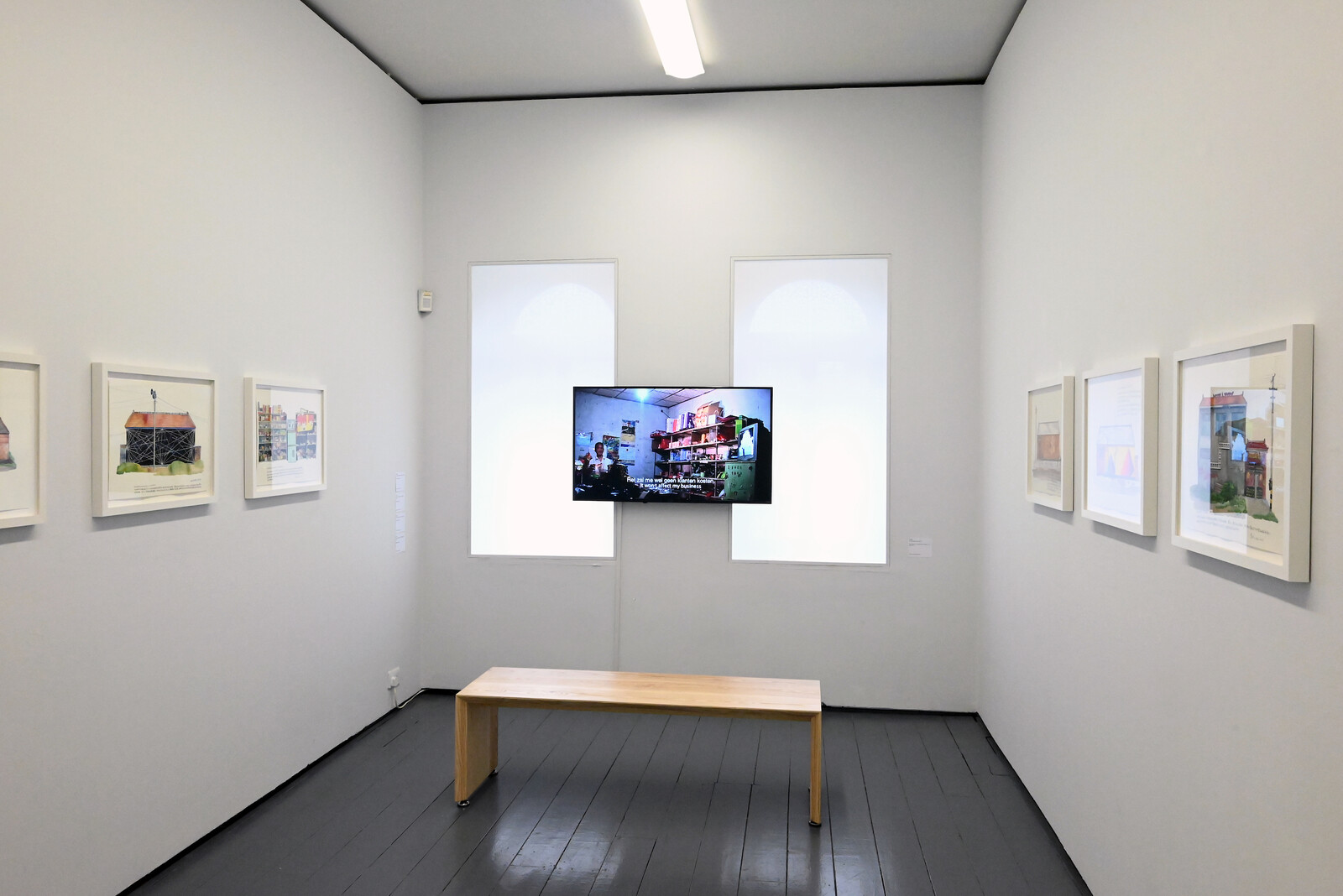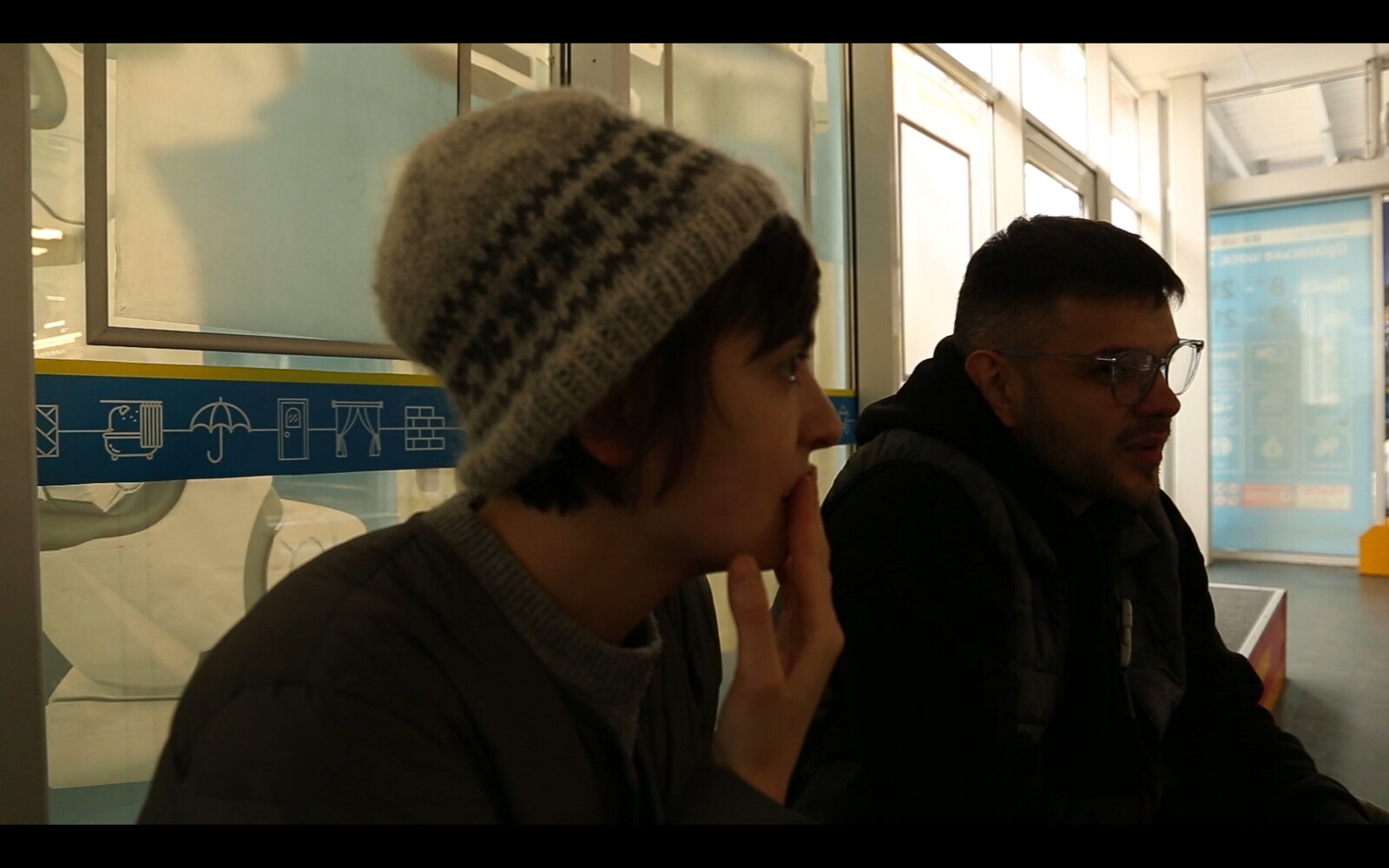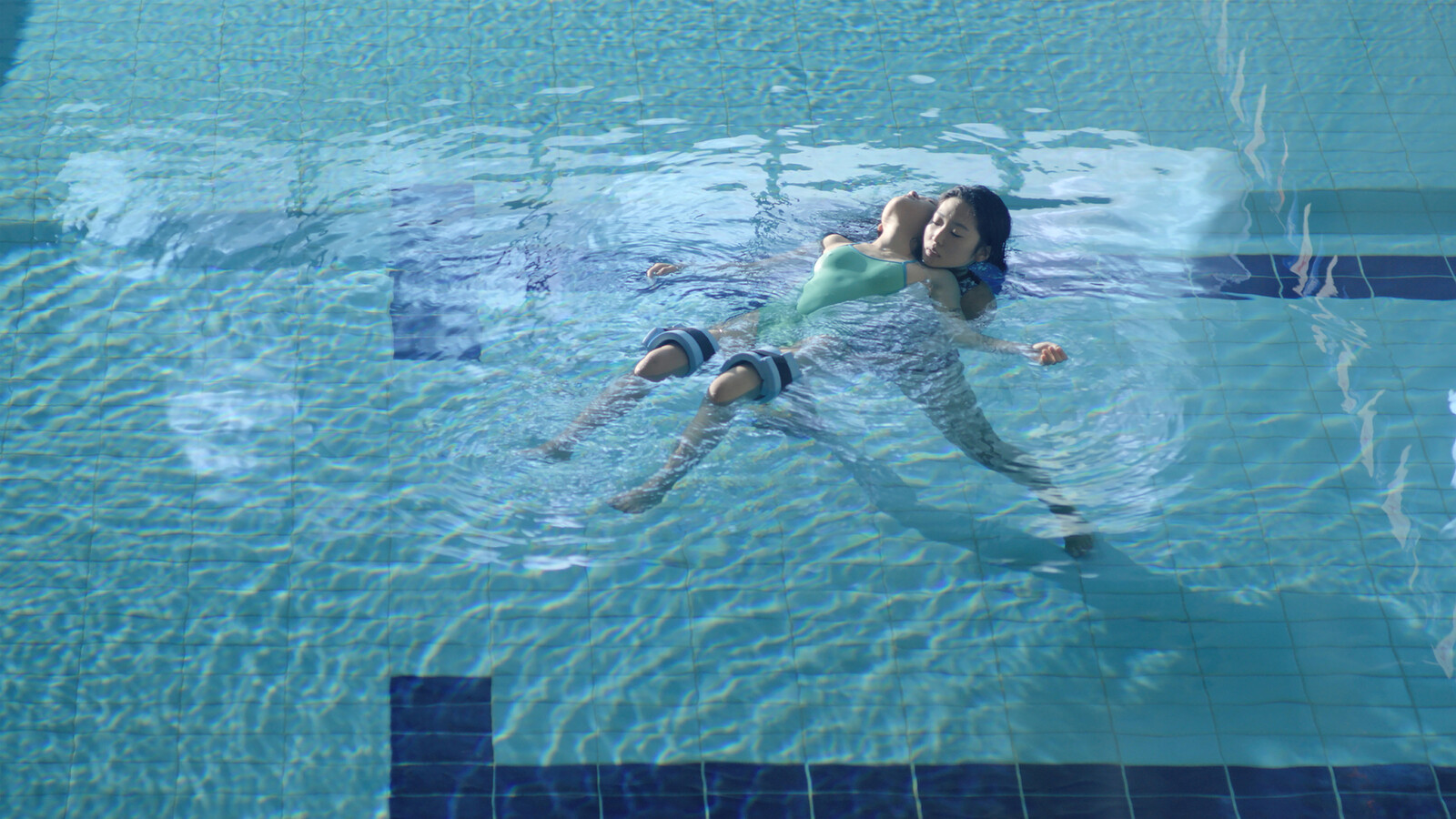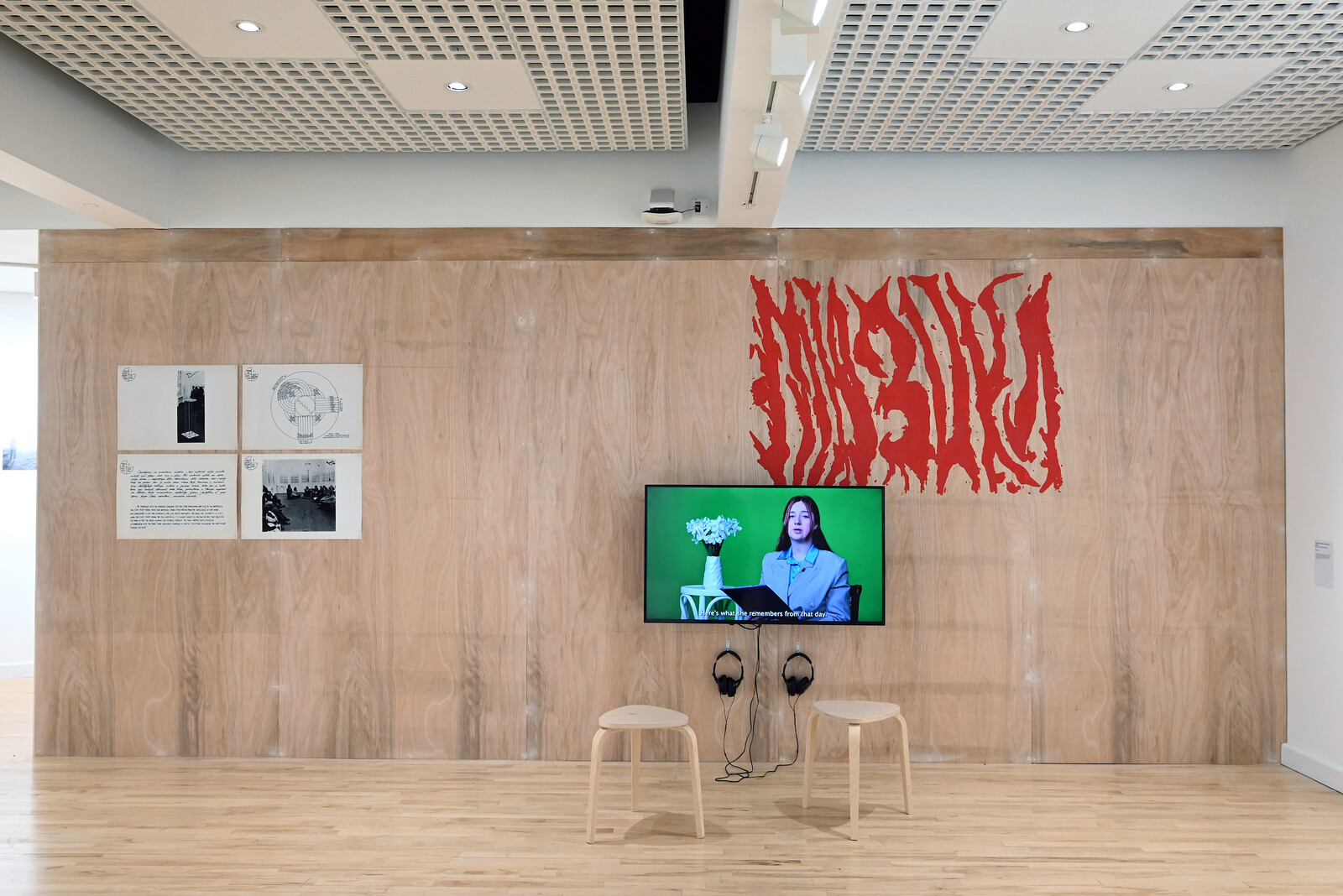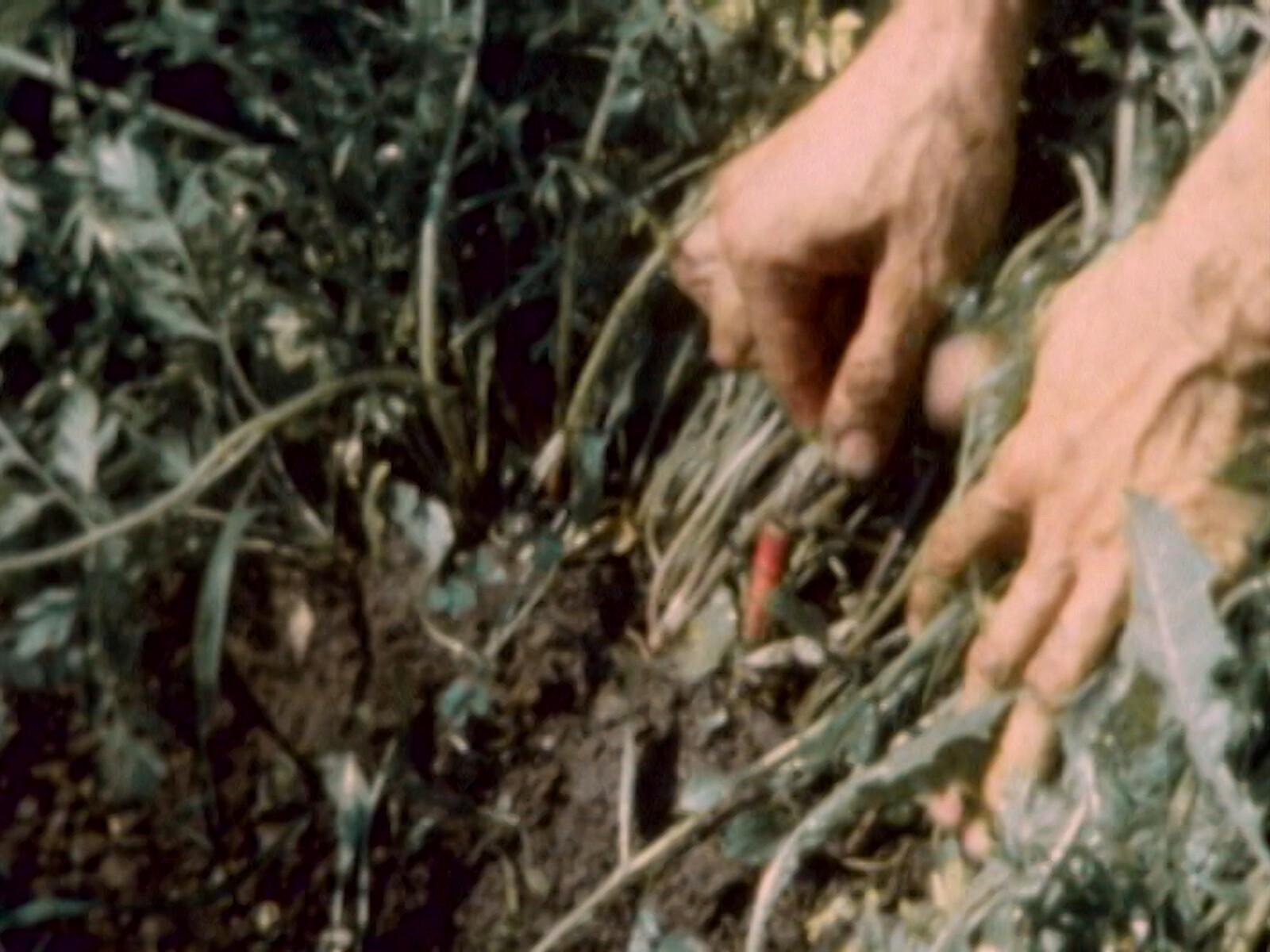In Lewis Carroll’s Sylvie and Bruno Concluded (1893), a lost tourist complains that the maps are much better in his homeland. So advanced are the cartographers there, he boasts, that they long since moved beyond puny pocket-maps to execute a map of the country “on the scale of a mile to the mile.” It hasn’t yet been spread out, he concedes, because “the farmers objected.” Yet on realizing that this perfect map very closely resembled the territory, his compatriots instead learned to navigate “using the country itself.” So now they have no need of maps.
This parable is used to support Stephen Wright’s proposal, cited by Sebastian Cichocki in his curatorial statement for an exhibition program scattered across Limerick, that art should also operate “on a 1:1 scale.” By a logic that might seem strained even to Alice, Wright suggests that artists take their cues from Carroll’s cartographers and make art that is coextensive with reality.1 This seems spectacularly to miss the point of the joke: if you don’t need maps, then you don’t need cartographers; if reality is its own representation, then you don’t need artists. If you want to intervene directly in the existing systems, you need social workers, teachers, economists, and farmers, not artists impersonating them.
It is symptomatic of a wider anxiety about its purpose that contemporary art is so frequently defended by arguments that might seem designed to advocate for its abolition. The implication that art should disappear into other disciplines is frustrating in the context of “The Gleaners Society,” because the best work in this often intelligent and frequently affecting show develops its title’s more compelling proposal that art might be constructed out of exactly that which exceeds, evades, or cannot be recuperated into life’s other activities. This is not to condemn it to irrelevance. Take for example Sashko Protyah’s harrowing My Favorite Job (2022), which documents the efforts of volunteers to rescue residents from the siege of Mariupol. Footage of drivers recounting near-death experiences at Russian checkpoints is interspersed with digitally animated reproductions of their journeys, attesting both to the courage of the protagonists and the brutalizing effects of Putin’s invasion.
At first, this document of an ongoing war might seem to satisfy the injunction that art should be coterminous with the real. But the act of rescuing people is not in itself the work, nor is this some perfectly unmediated reproduction of the events. Rather the art here consists in the filmmaker’s painstaking fabrication of a story out of fragmentary experiences, returning control over the narrative to those who suffered by it and prompting emotions in viewers that might change their attitudes and behaviors. It is not an accidental property of this work that it scales a complex conflict down to a single-channel film running for forty minutes that can be screened in the University of Limerick’s library, but essential to it. More than a mere shadow play of distant action, this work of art builds new meaning out of that trauma that is the waste product of war.
That this show posits a more complex relationship between art and the systems that govern our experience is confirmed by a smartly conceived and executed presentation in the Bourn Vincent Gallery. Films, photographs, and schematic diagrams produced by the Slovene art collective OHO introduce a recurring theme of model communities and their dissolution (the group disbanded in 1971 to establish an agricultural commune). Three exquisite ink drawings by Joydeb Roaja give anthropomorphized form to the impact of militarization on the Tripura community to which he belongs, but the standout is a video by Peter Nadin, Natsuko Uchino, and Aimée Toledano that sets the former’s retreat from the New York art world to a collage of spoken word and music (The First Mark, 2008).
In this combination of work a subtler proposition emerges, according to which art might be a looking glass that changes how we perceive our surroundings and, by extension, how we act upon them. The First Mark is valuable not only because Nadin has interesting things to say about animal husbandry—County Limerick’s many farmers might also object to the notion that they should relocate to an art gallery to read an instruction on how to keep pigs—but because its highly inventive combination of offcut words and images reframes our relationship with the fragile economies of energy and material through which we move in life and death.
At Ormston House, the cultural center that is a lynchpin of the Limerick art scene, Jeamin Cha’s elusive Nameless Syndrome (2023) further challenges the presumption that individual subjects can ever comprehensively be mapped. Exploring the phenomena of those illnesses that evade detection by medical imaging technology (and which disproportionately afflict women), Cha’s twenty-minute video overlays footage of diagnostic procedure and bodily care with a carefully woven tapestry of quotations on the discontinuity of the real and its representation. In doing so she advances Hannah Arendt’s dictum that “storytelling reveals meaning without committing the error of defining,” while at the same time suggesting that truth might also inhere in that which cannot be recognized, identified, or put to use by power.
In this respect, the work again links to the process of “gleaning” by which crops left over from a commercial harvest are informally gathered and redistributed among the needy. That art might operate in the space neglected by conventional systems of value is exemplified at the Limerick City Gallery by Natsuko Uchino’s understated combination of surplus materials from her studio with detritus from the city’s streets and construction sites. In covering the surfaces of a vegetarian restaurant with aesthetically compelling information on plants and herbs, Navine G. Dossos deploys the discourse of ecological art to change the way that workers on Cecil Street relate to their lunch. Li Mu’s guerilla copies of canonical works of contemporary art by Sol LeWitt or Daniel Buren, installed around the artist’s hometown of Qiuzhuang and documented in video diaries and watercolor paintings, also operate outside the systems of capitalist economy—according to which all things must be mapped, attributed to an owner, and serve a measurable function—and yet are manifestly active in the world.
The danger of implying that art should be indistinguishable from the world is that it inadvertently supports the dismantlement of its institutions, makes it answerable to the same economic metrics by which other industries are judged useful, and might seem to justify the growing tendency in Europe to direct state funding to artists who might plug the gaps in social care created by politically motivated austerity programs. In practice, this edition of EVA International demonstrates the value of an independent art institution that is nonetheless informed by, and linked into, the city. It is significantly to the biennial’s credit that it has recently made demonstrable efforts to engage Limerick’s emerging arts community, and so this exhibition feels less like a map of a single reality than a meeting point between local and international cultures, enriched by the traffic between these two worlds.
It was because of that crossover that I came across the work of Daithí Mac Cruitín (aka mankyy), not included in the biennial but part of a network of artists and musicians active in and around it. His A.B.C.s is a tiny handmade and thread-bound abecedary, measuring 1½ x 1 inches, in which each letter is illustrated on the recto by a collage of found images that combine surrealist humor with the iconoclasm of punks like Linder. In its radical openness to interpretation, this pocketbook reads like a rebuttal of the Dictionary of Received Ideas (1911–13), through which Flaubert lampooned the idea that the world can be indexed in words much as Carroll had earlier satirized the idea that it can be mapped by images. Like all works of imagination, this miniature reminds us that the world is much stranger than can be accounted for by any single system of apprehending it, and that art’s value might consist in its capacity to alert us to the many realities of which we are not conscious. So, at its best, does this biennial.
Stephen Wright, Toward a Lexicon of Usership (2013). See: https://museumarteutil.net/wp-content/uploads/2013/12/Toward-a-lexicon-of-usership.pdf.
